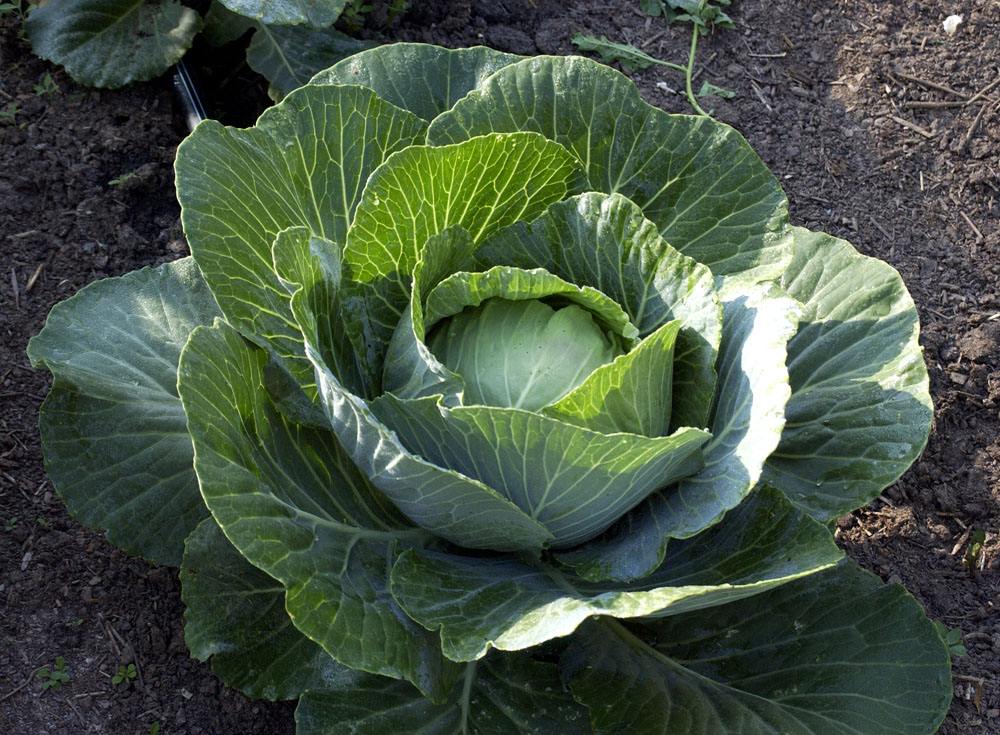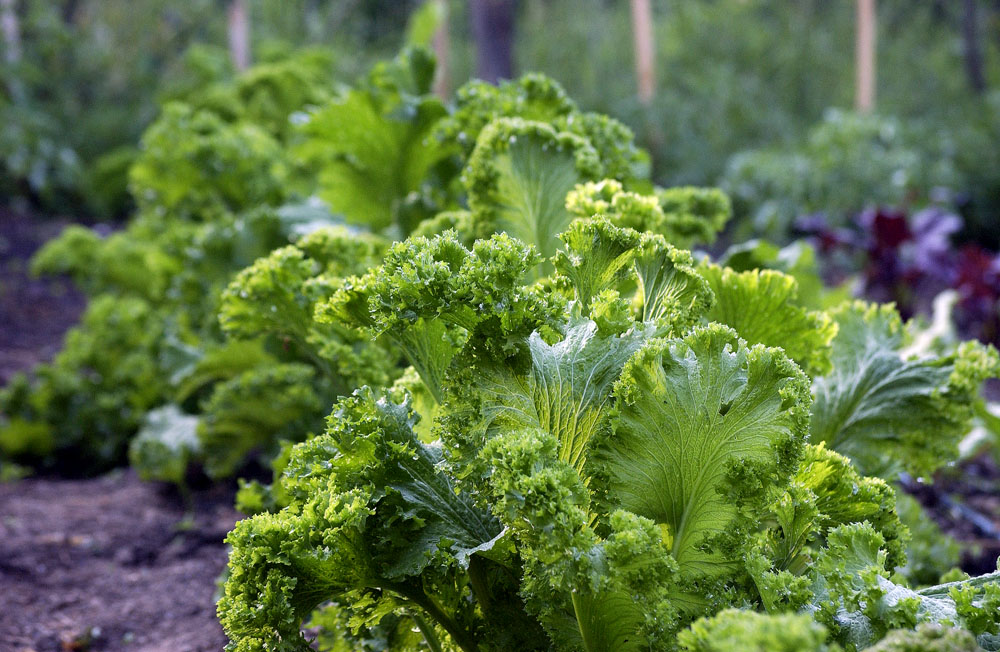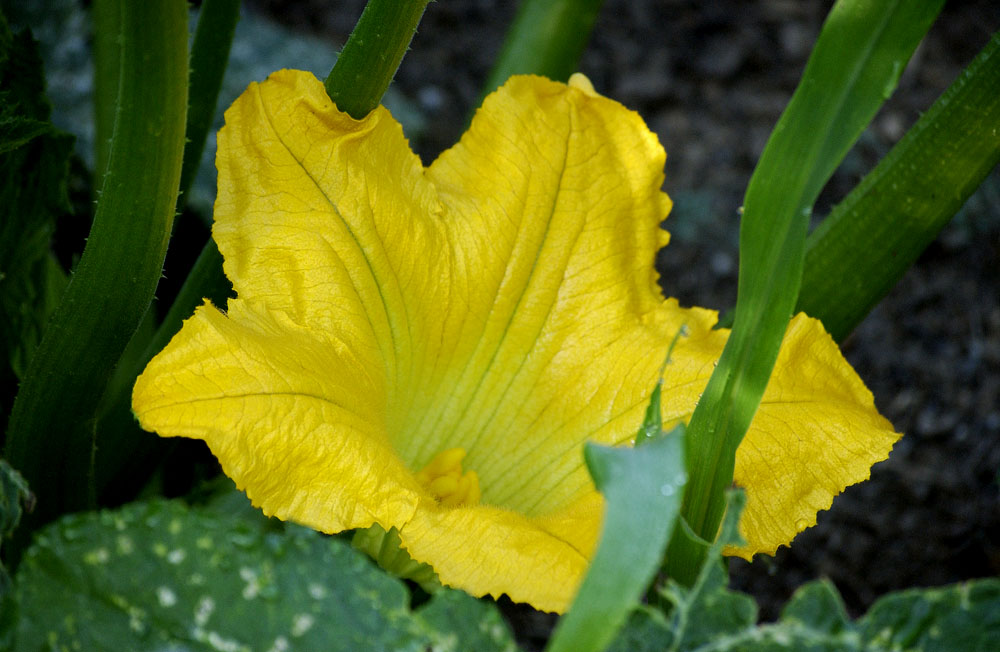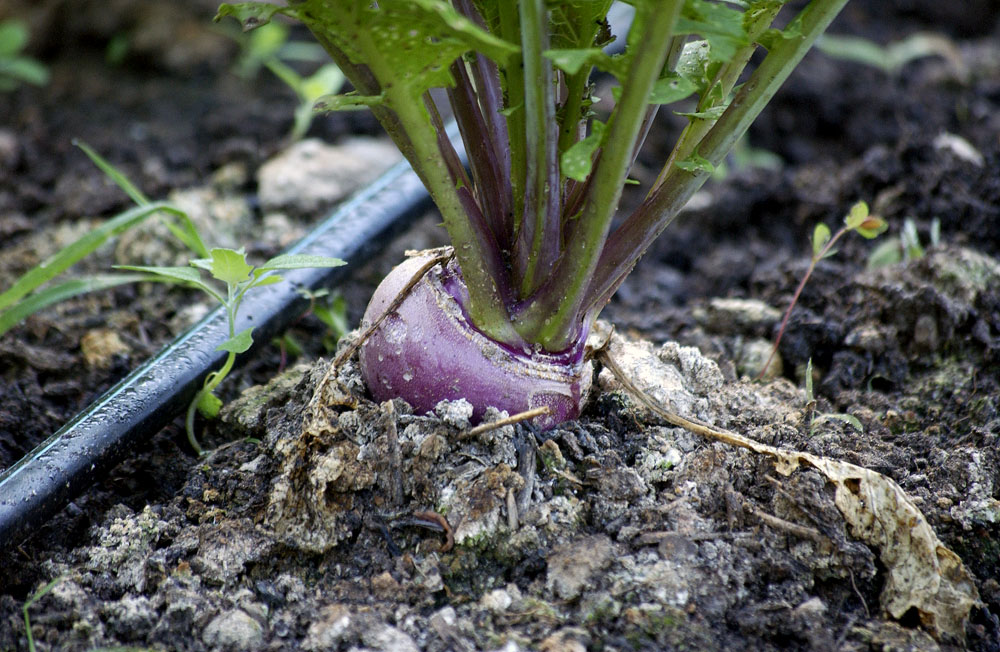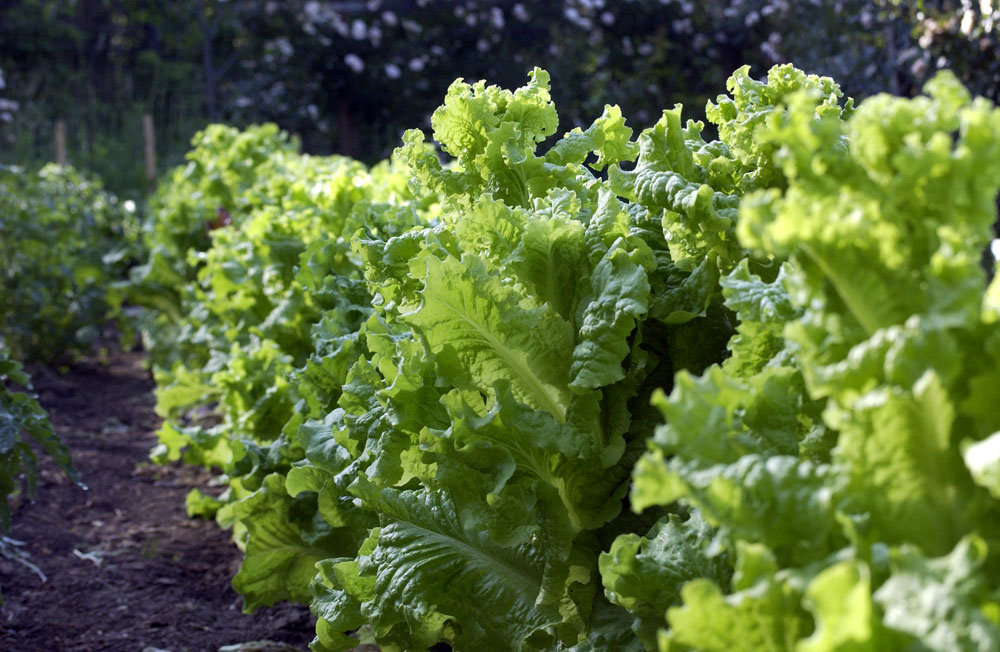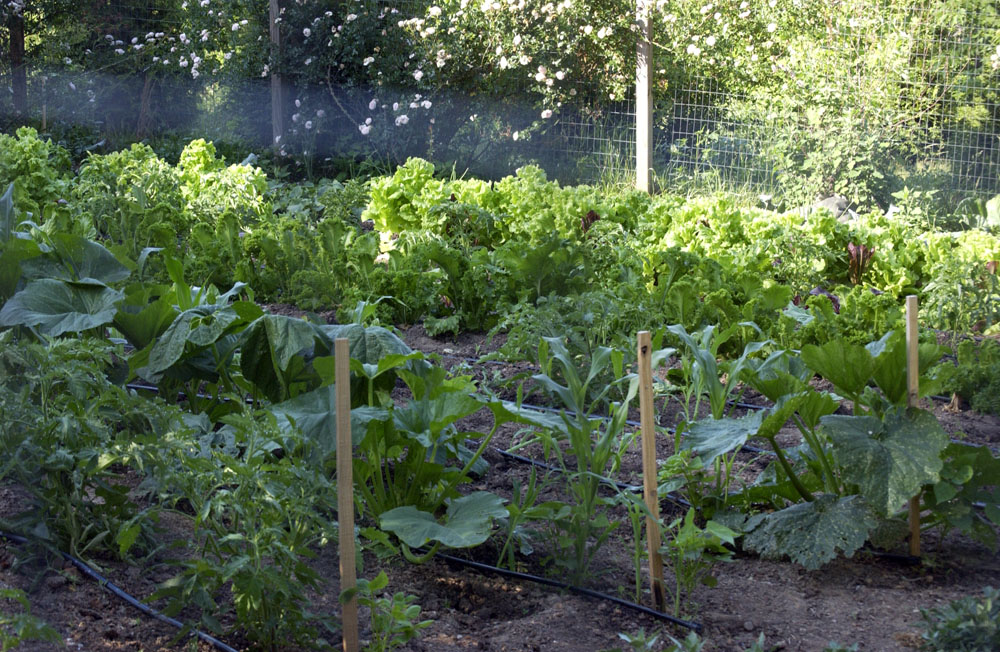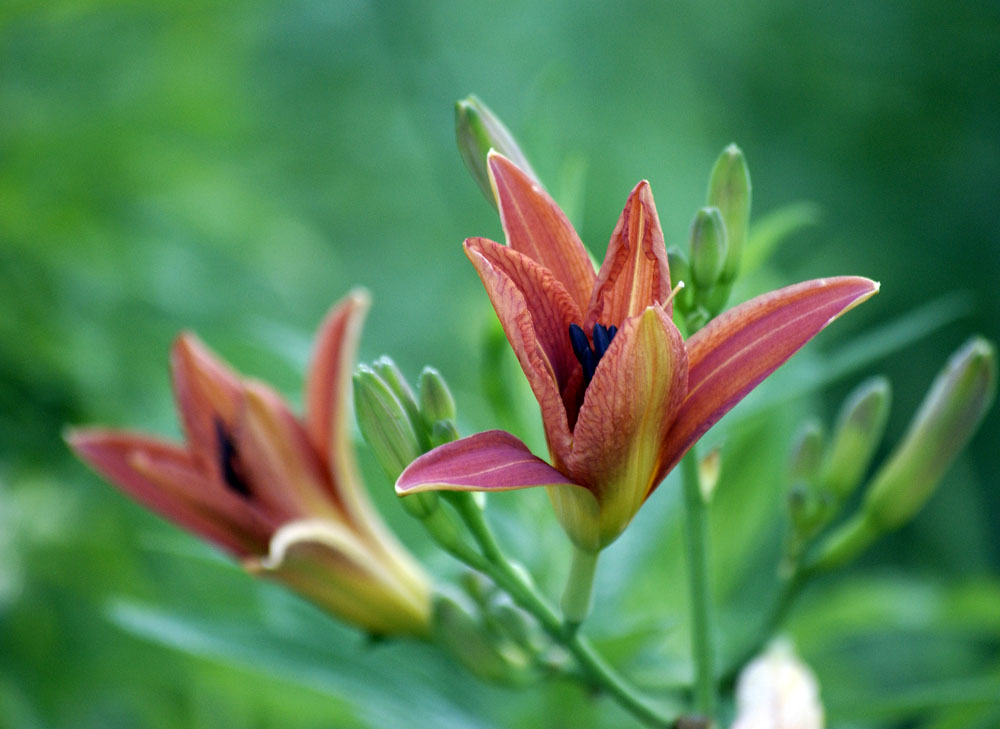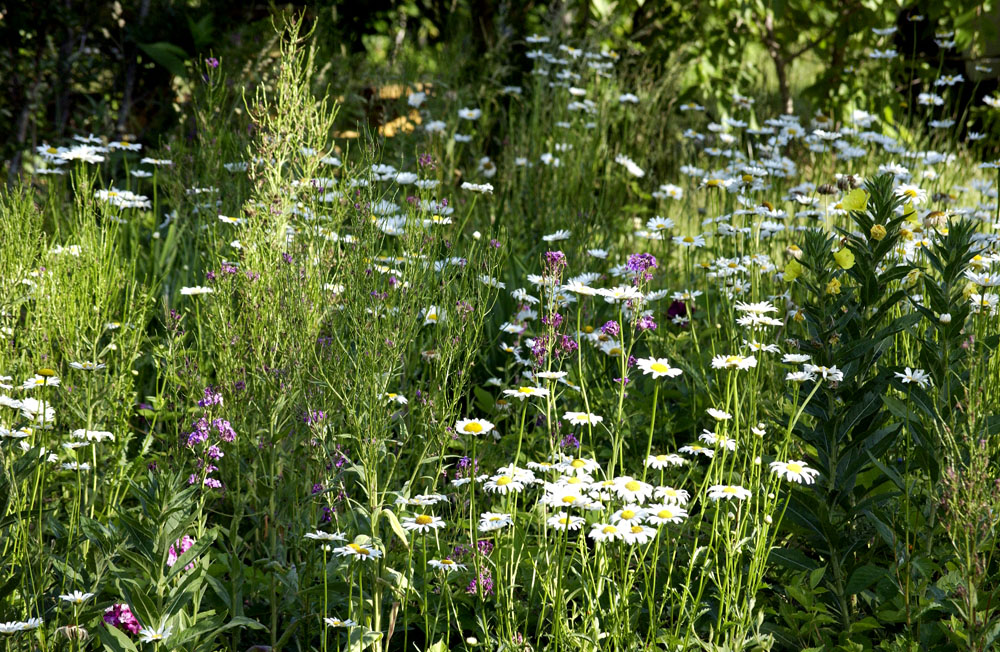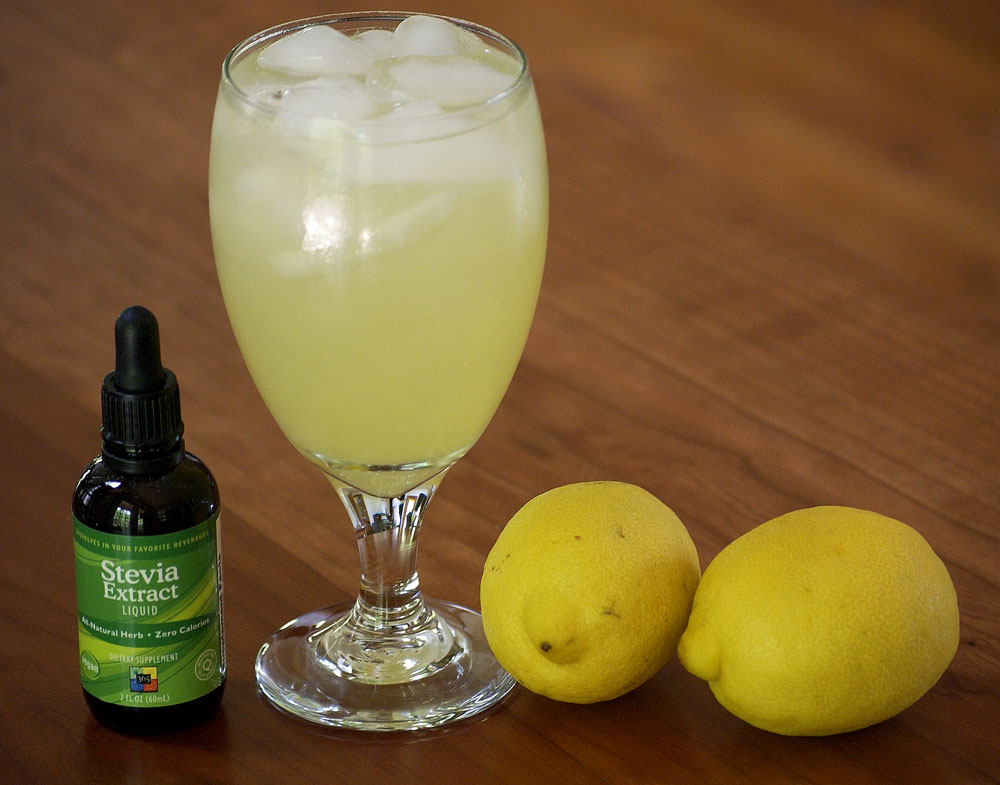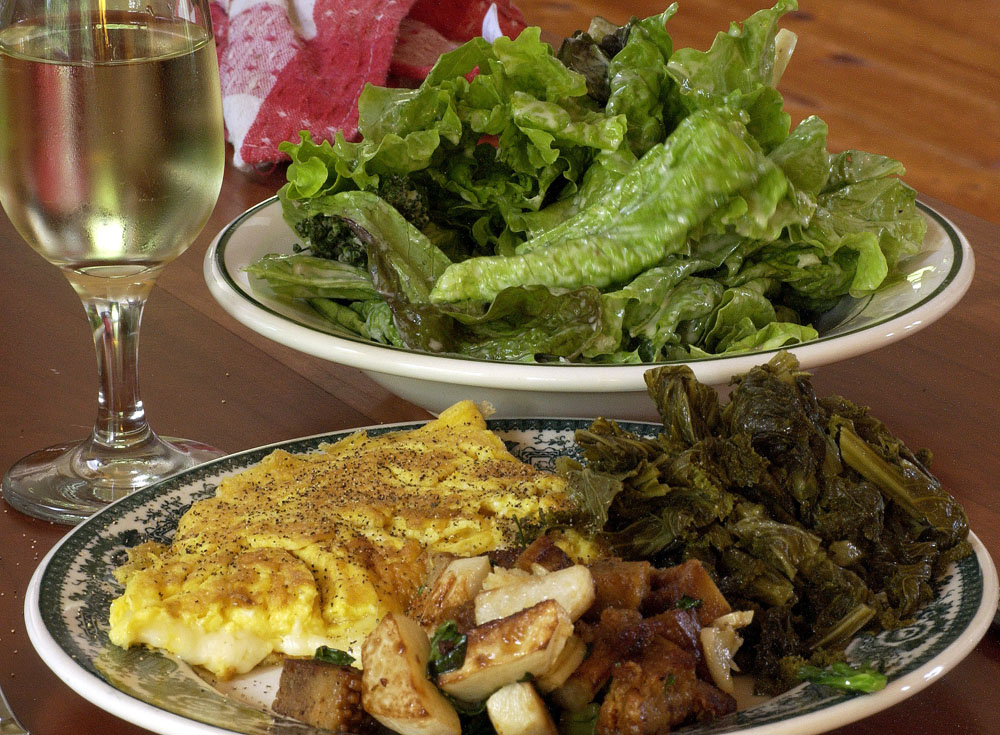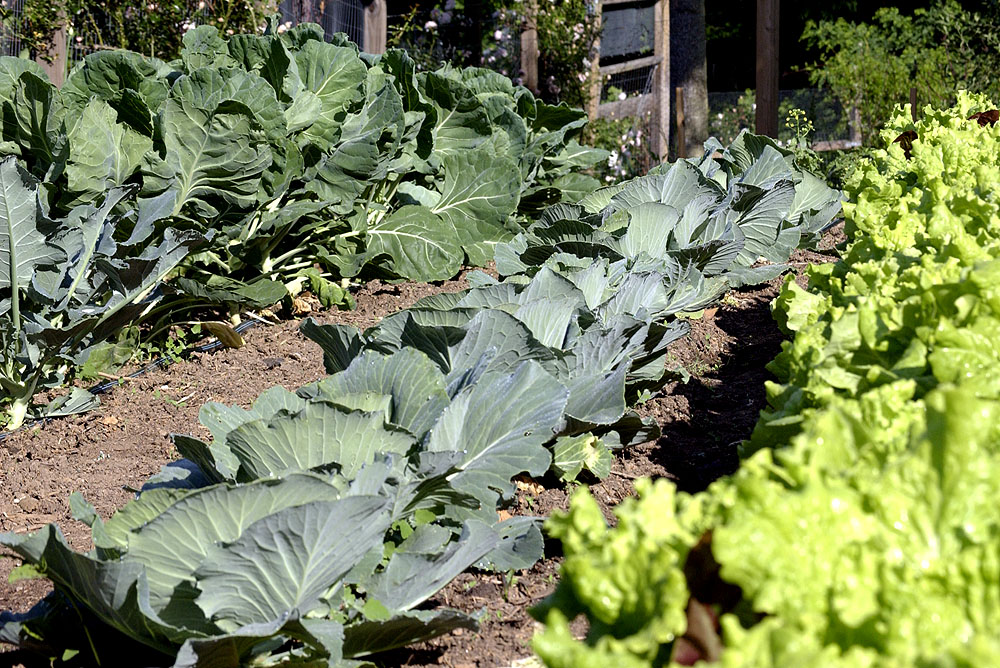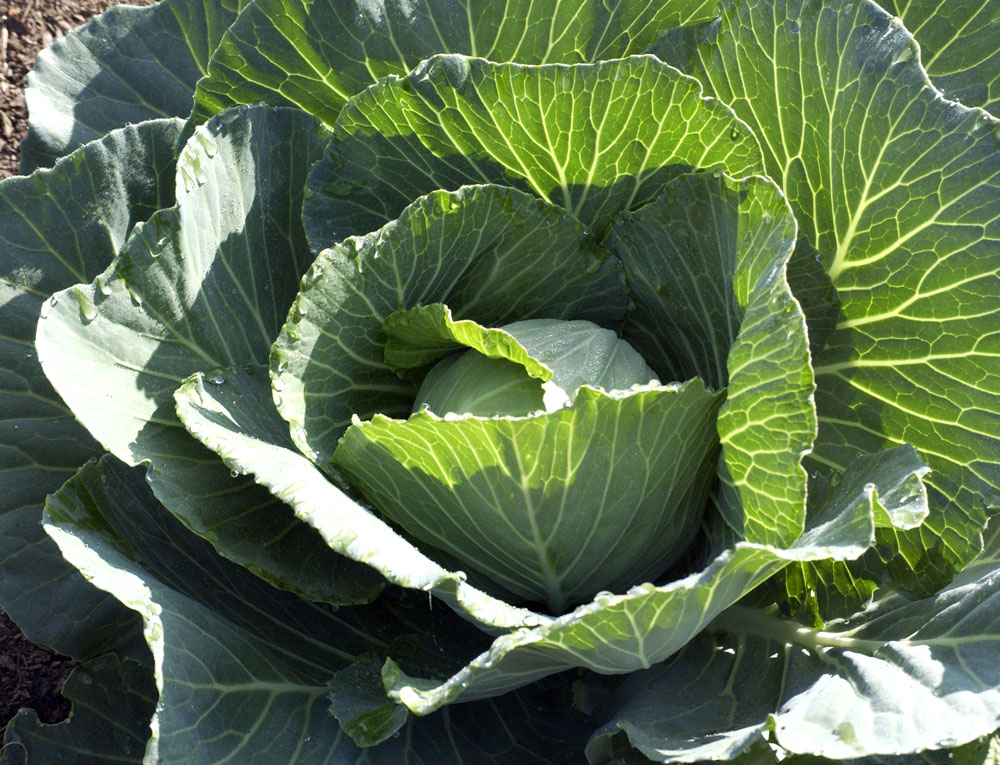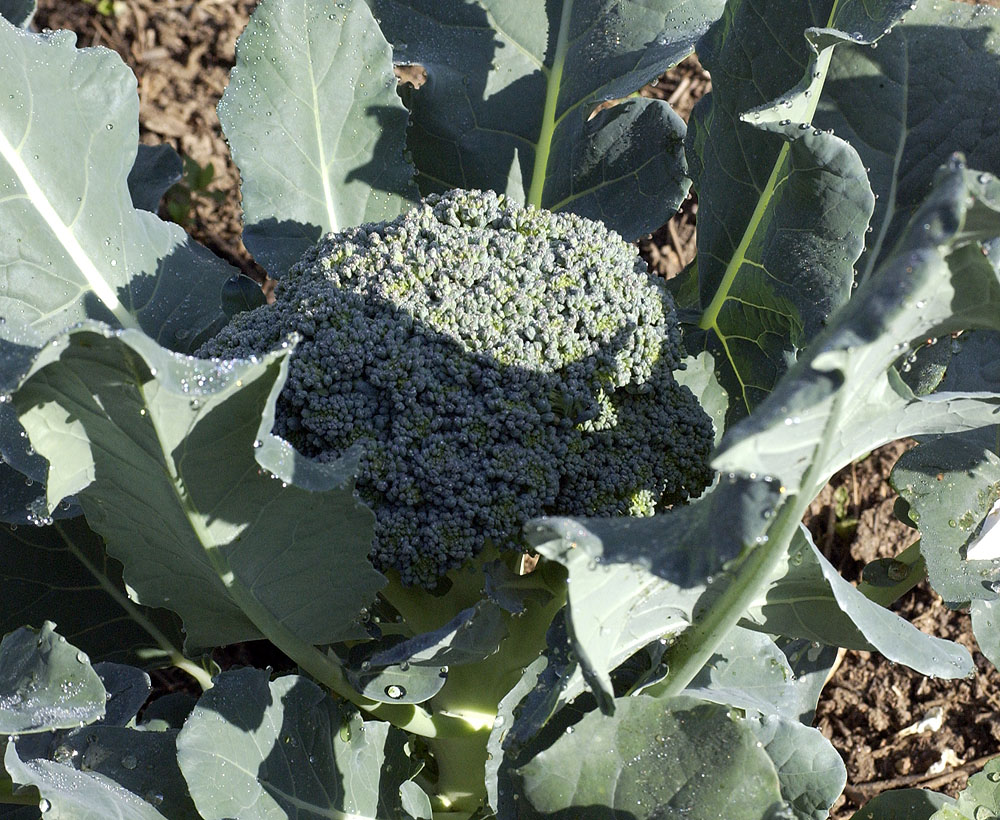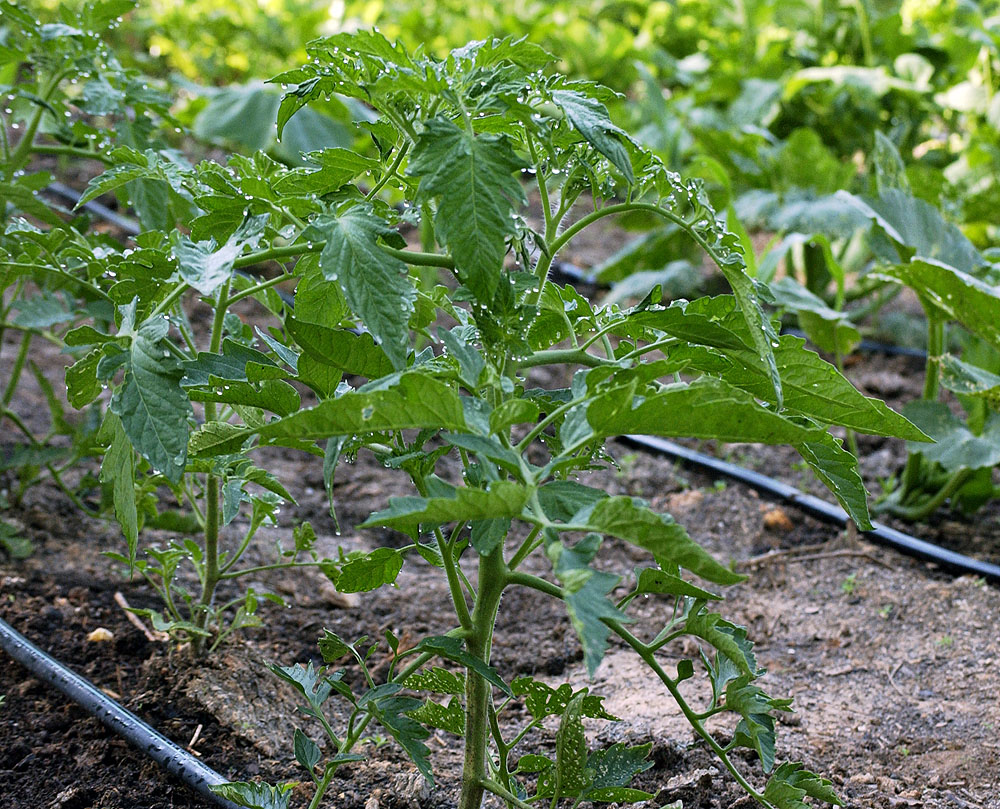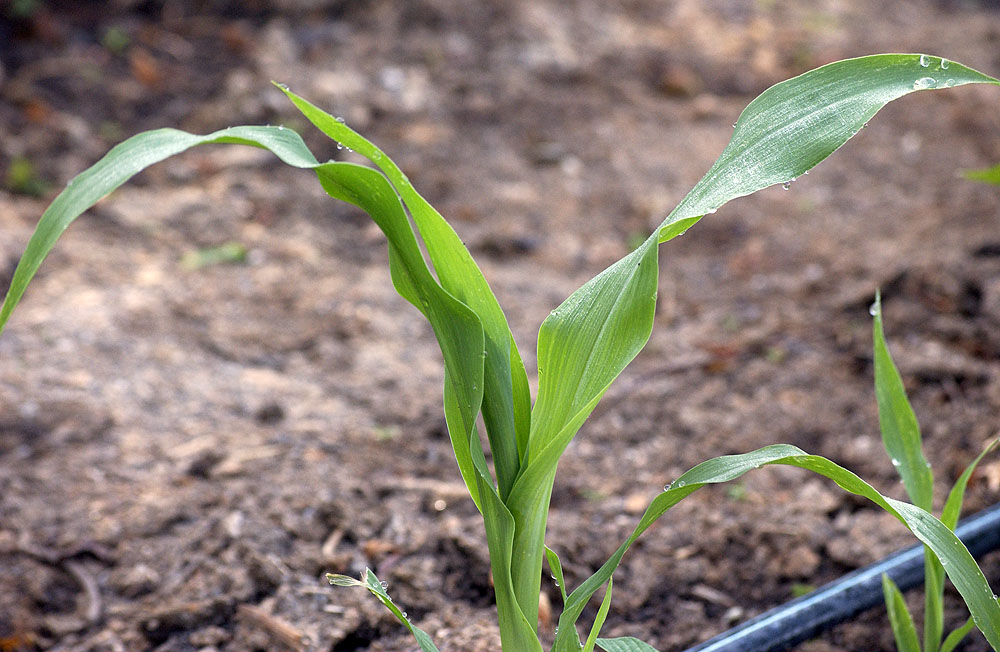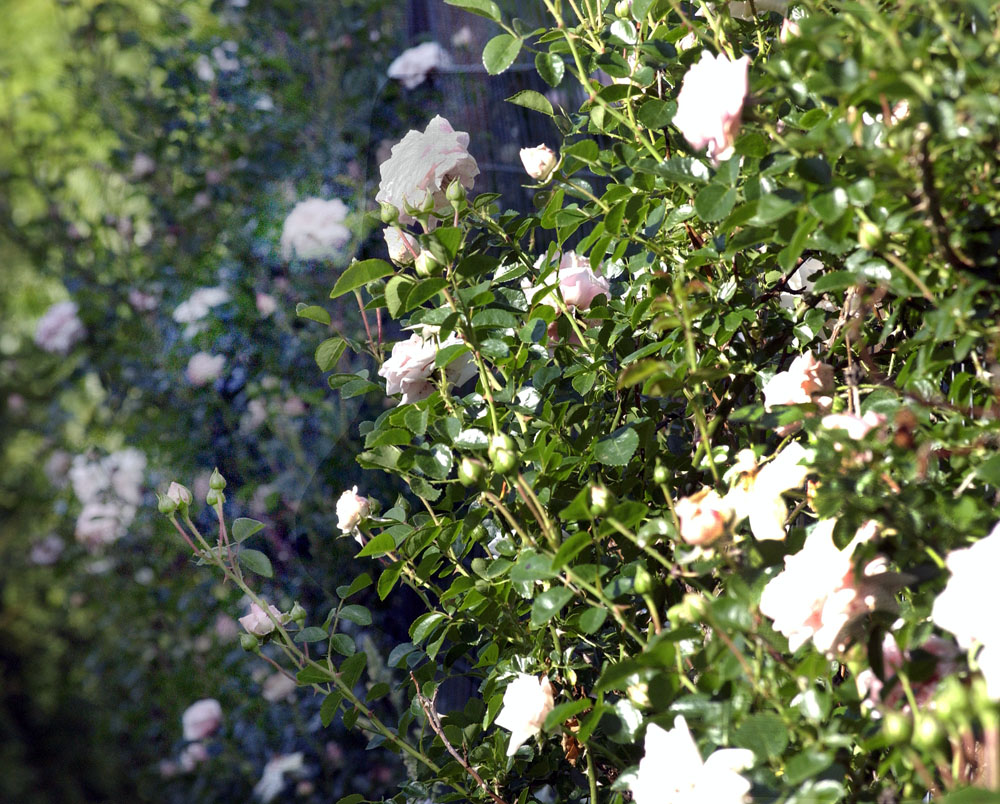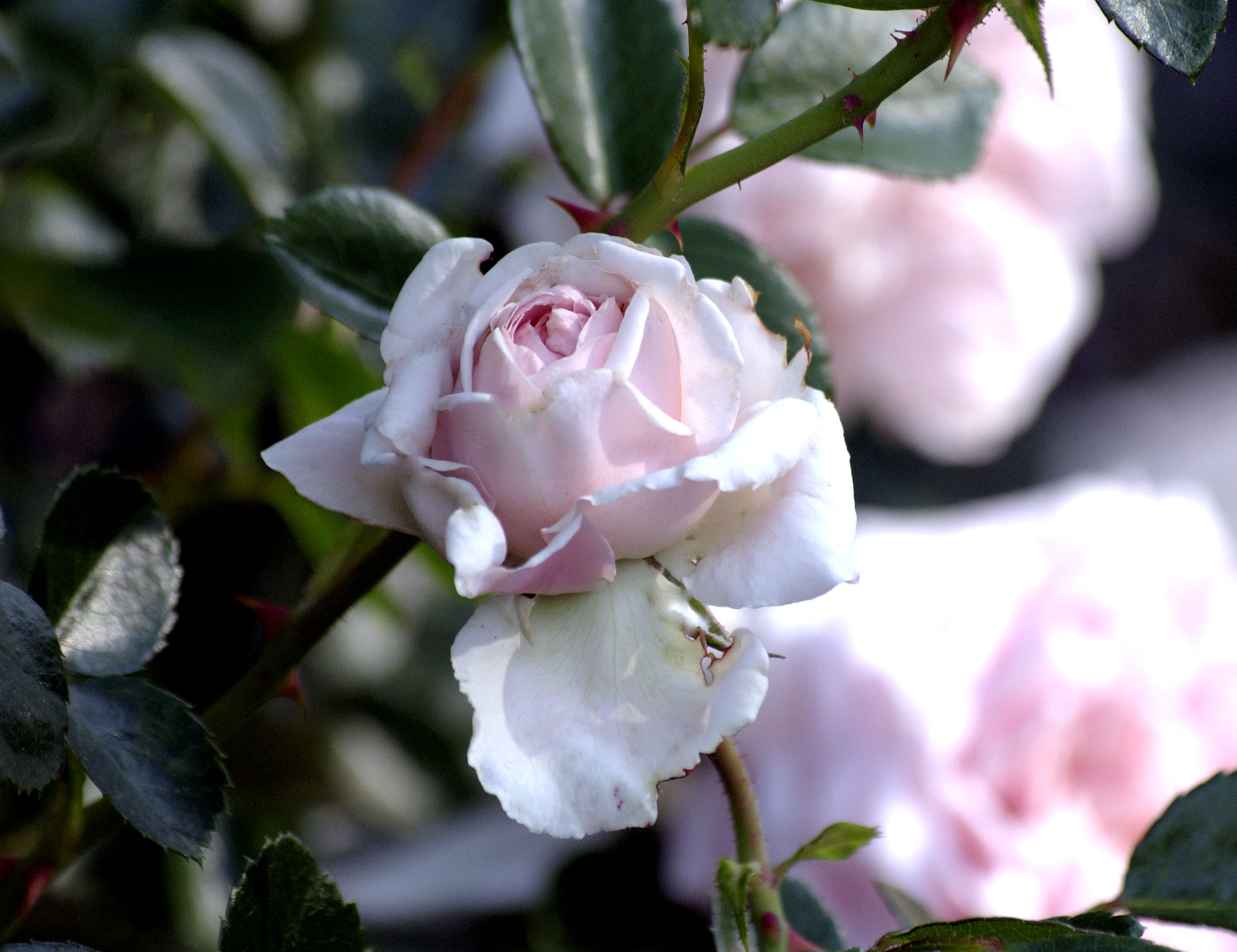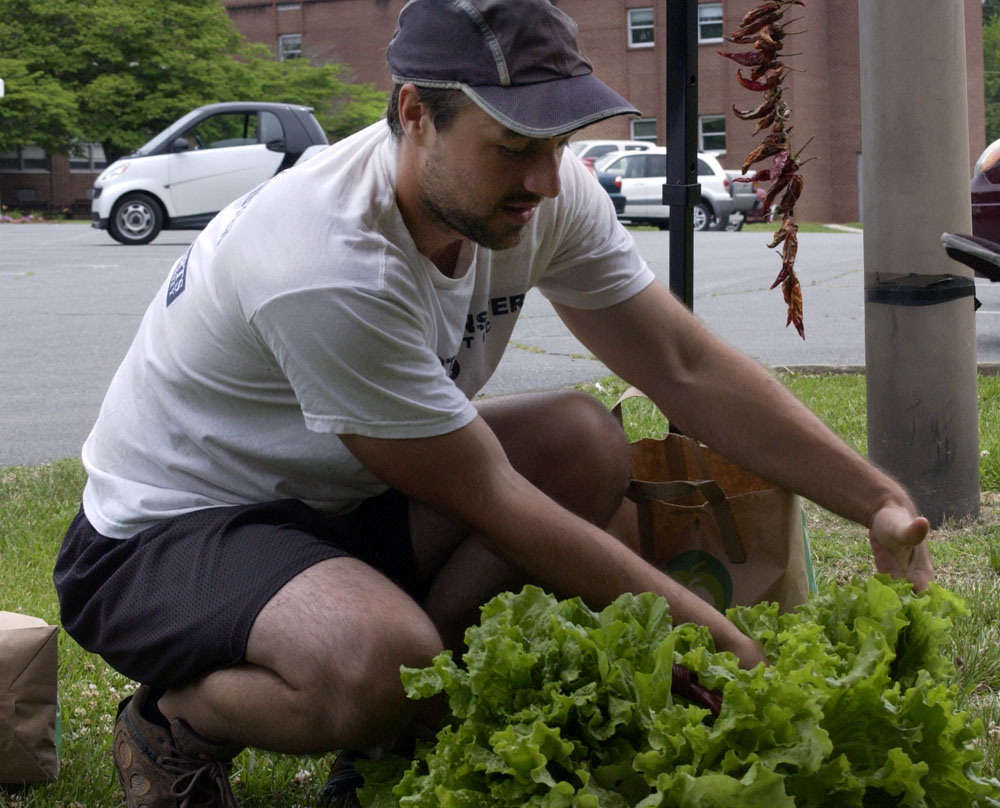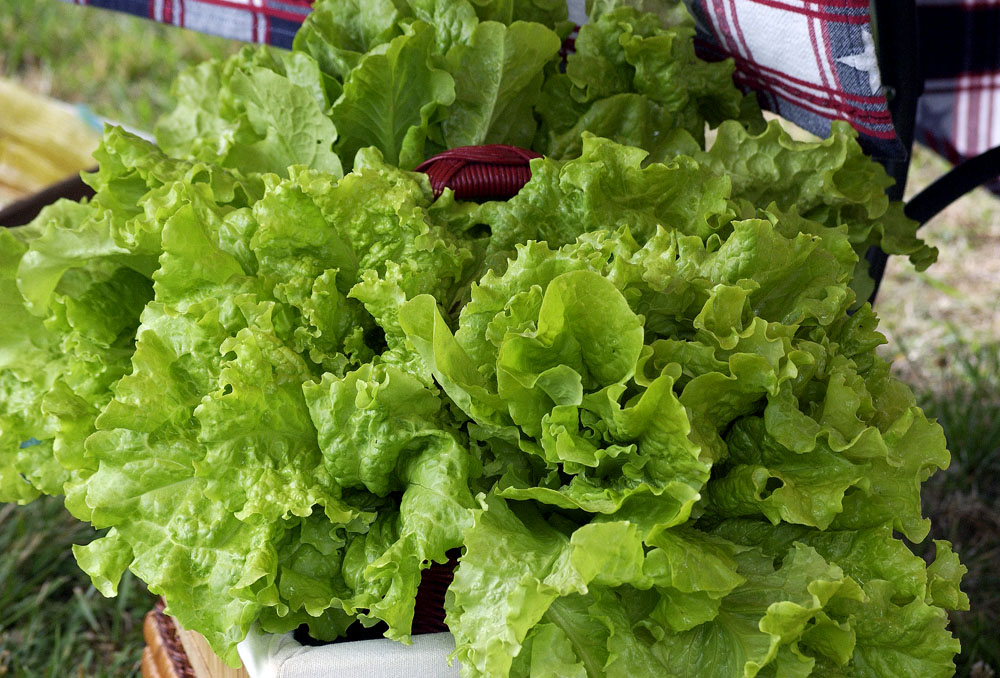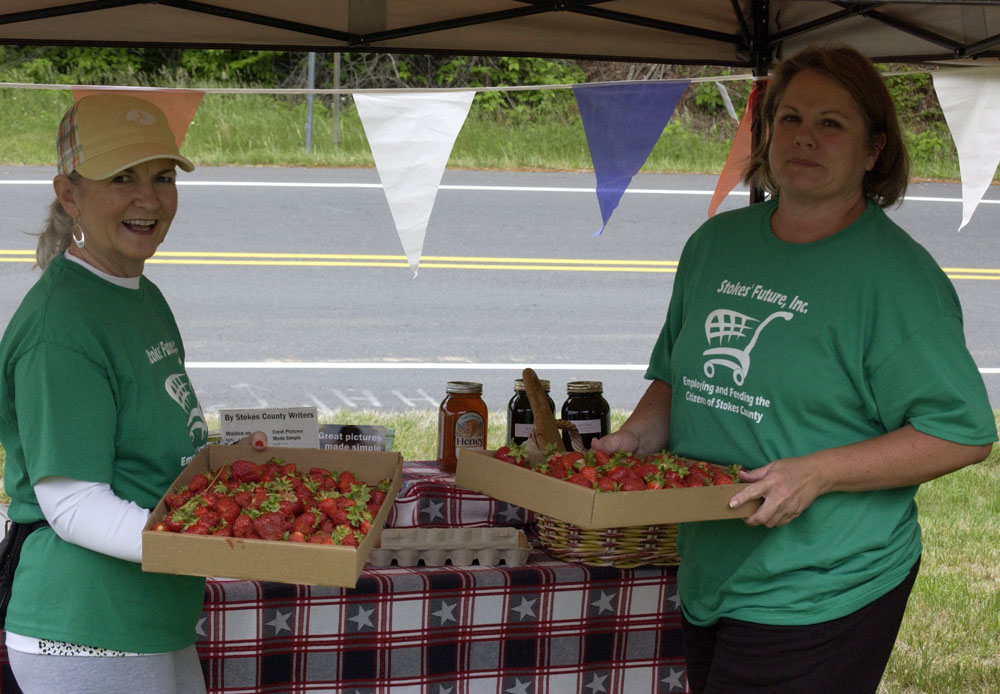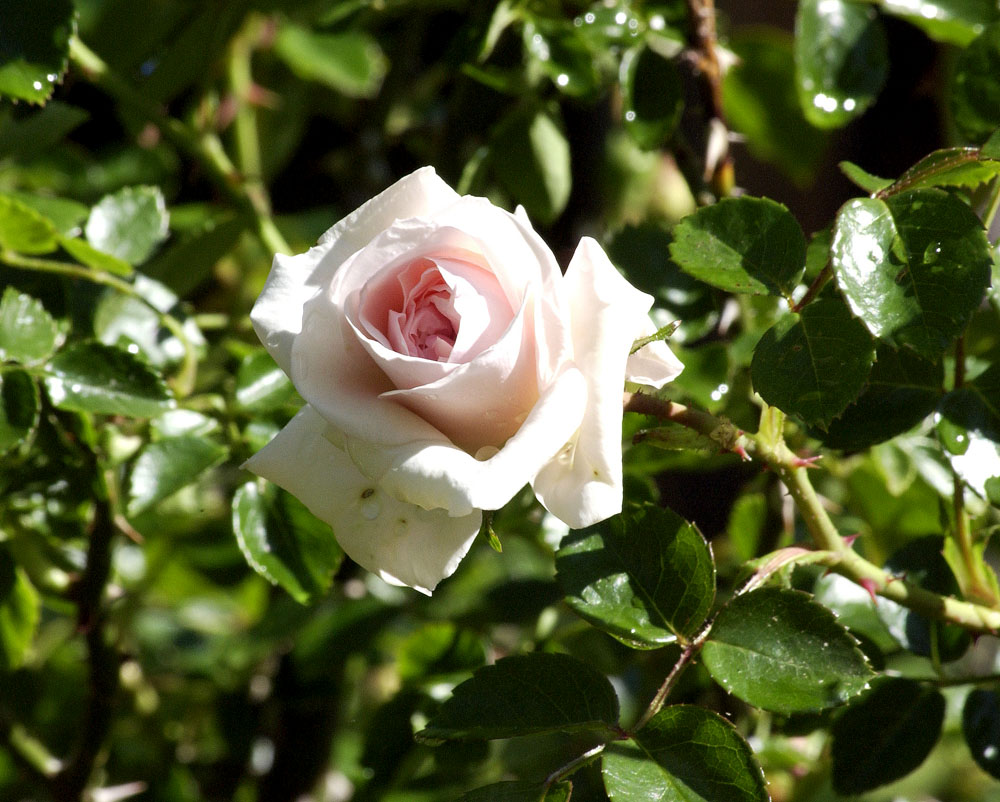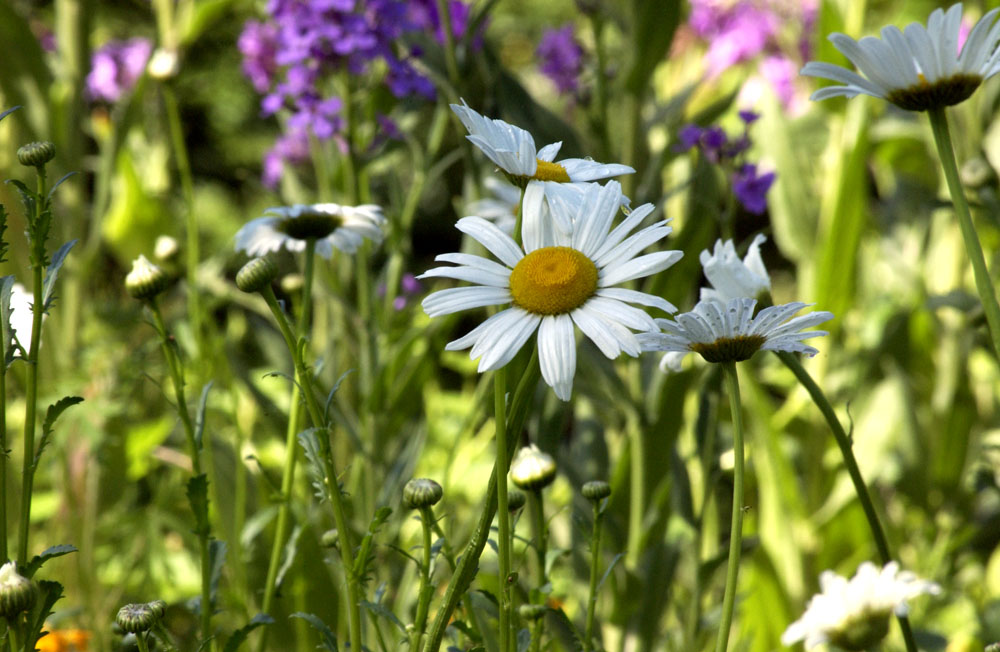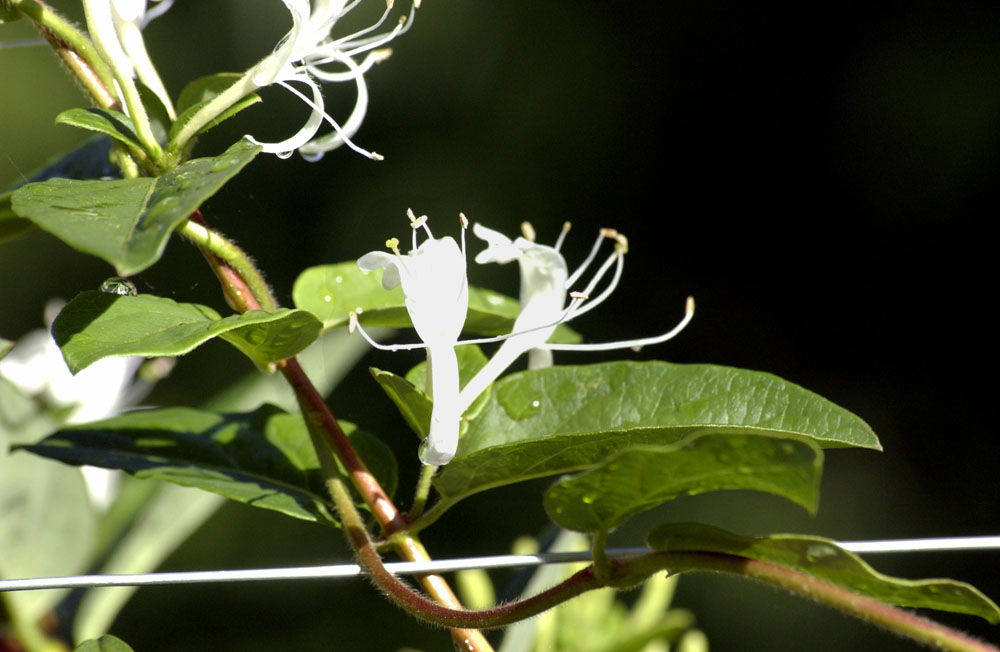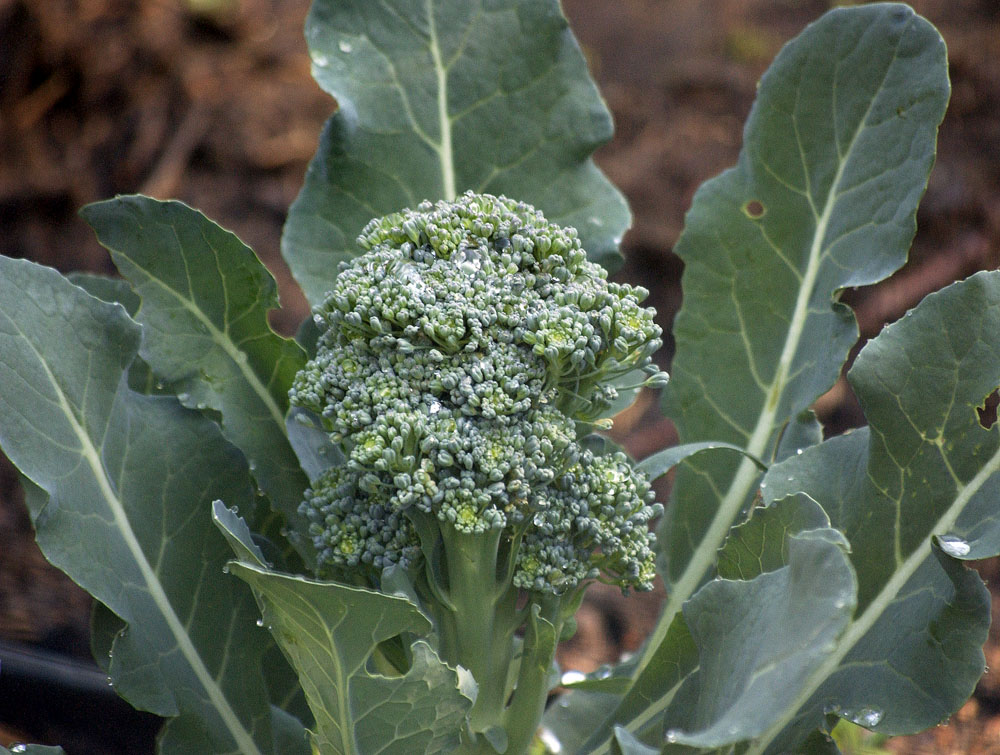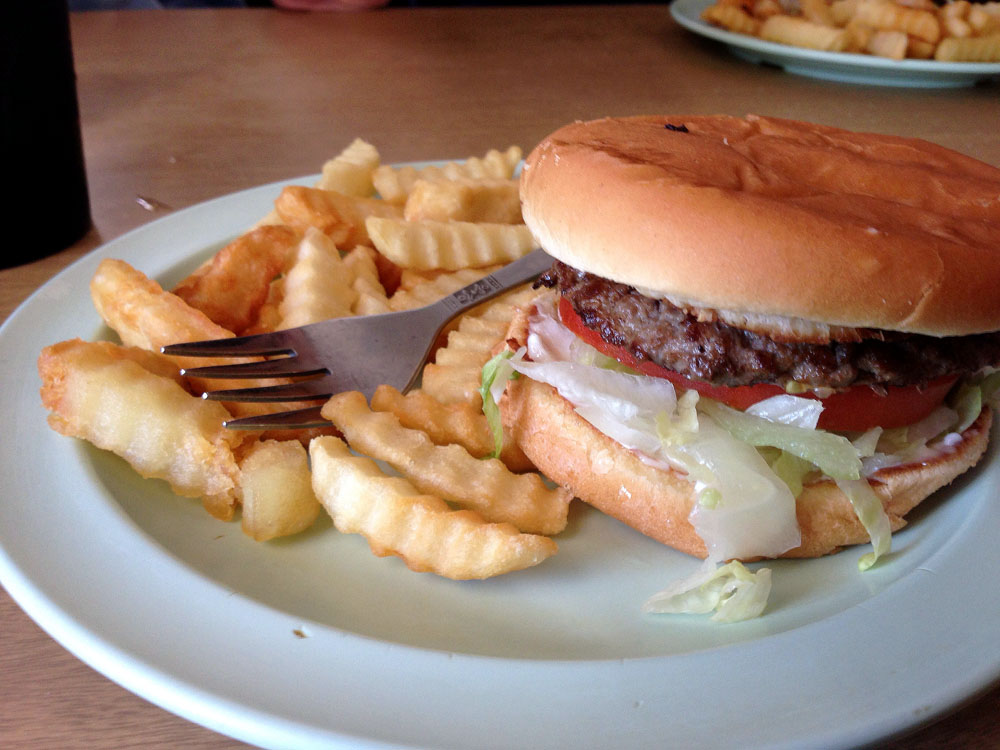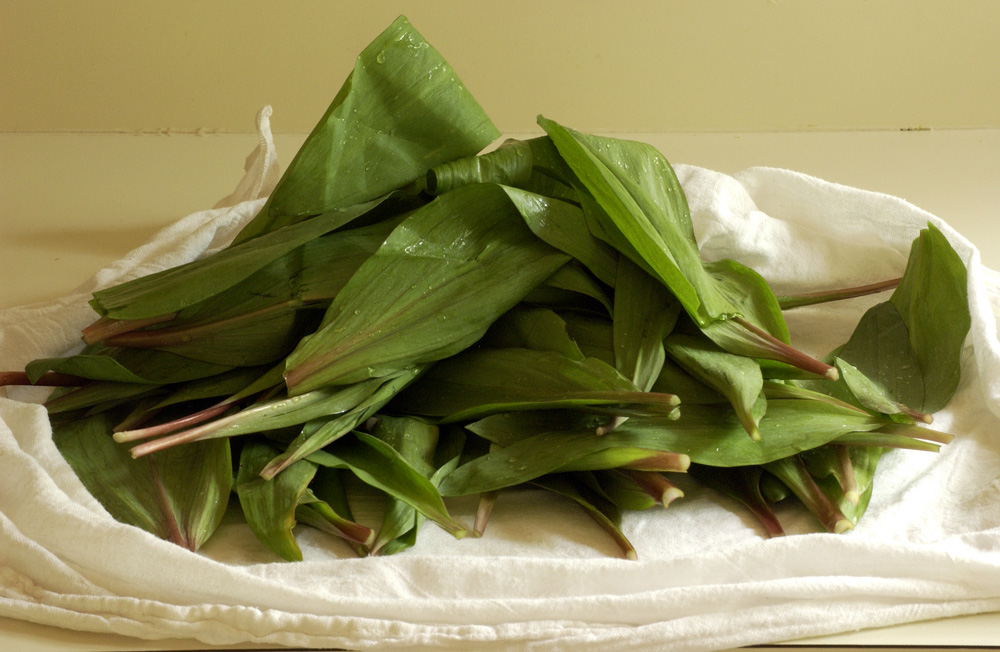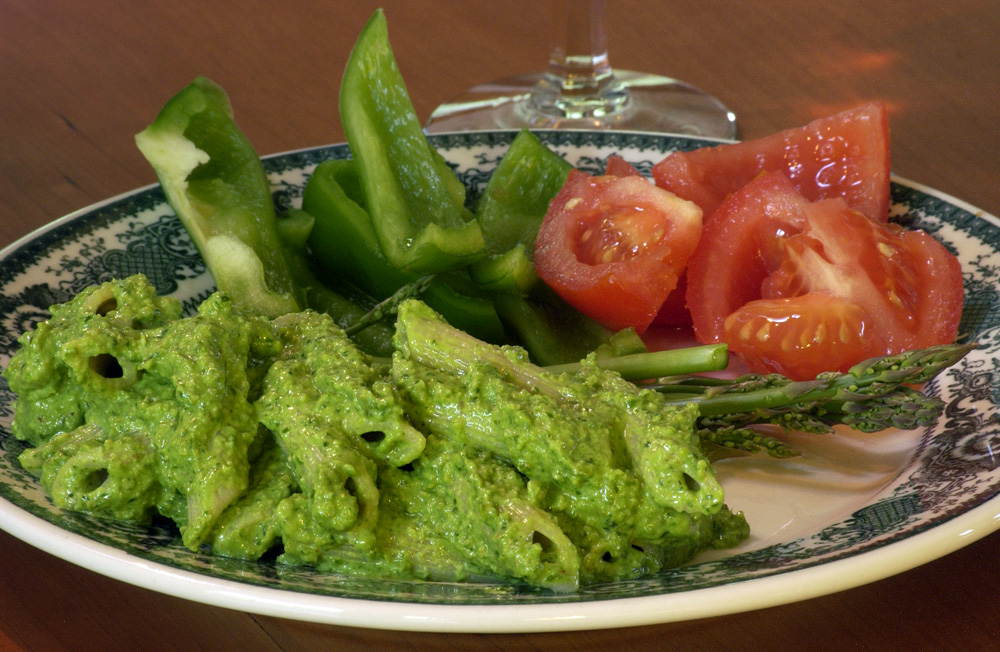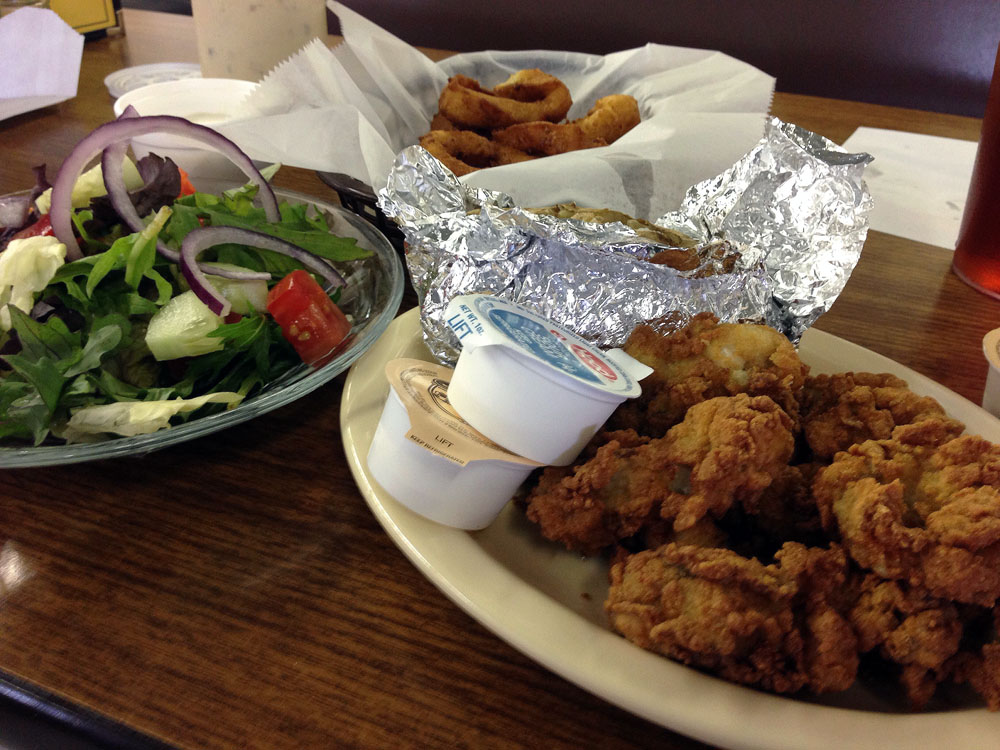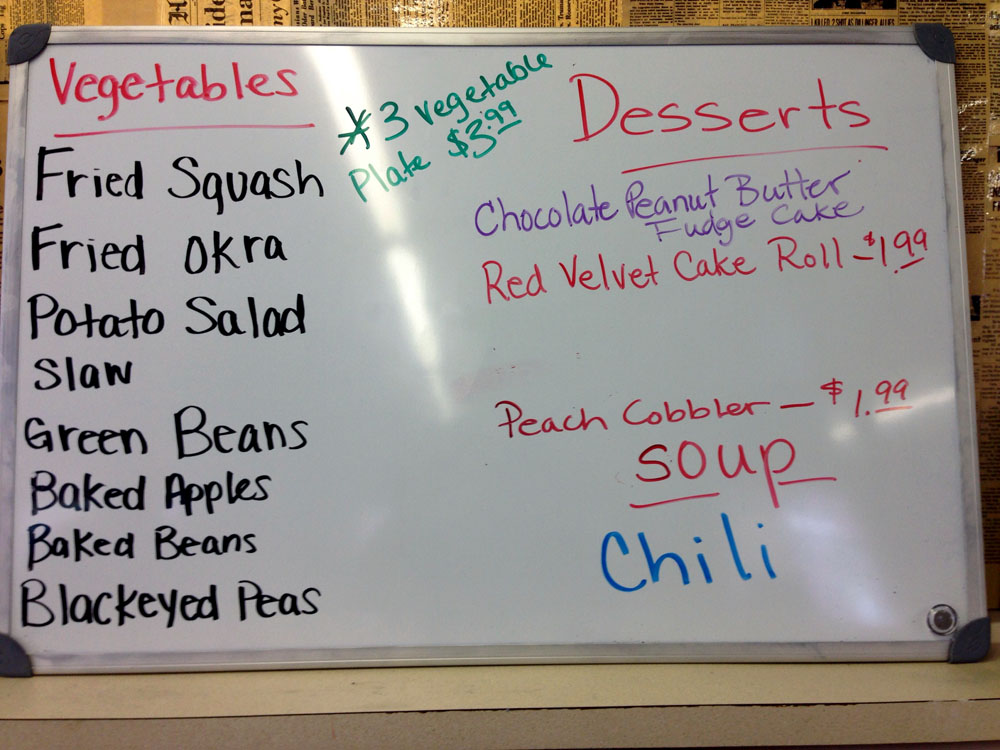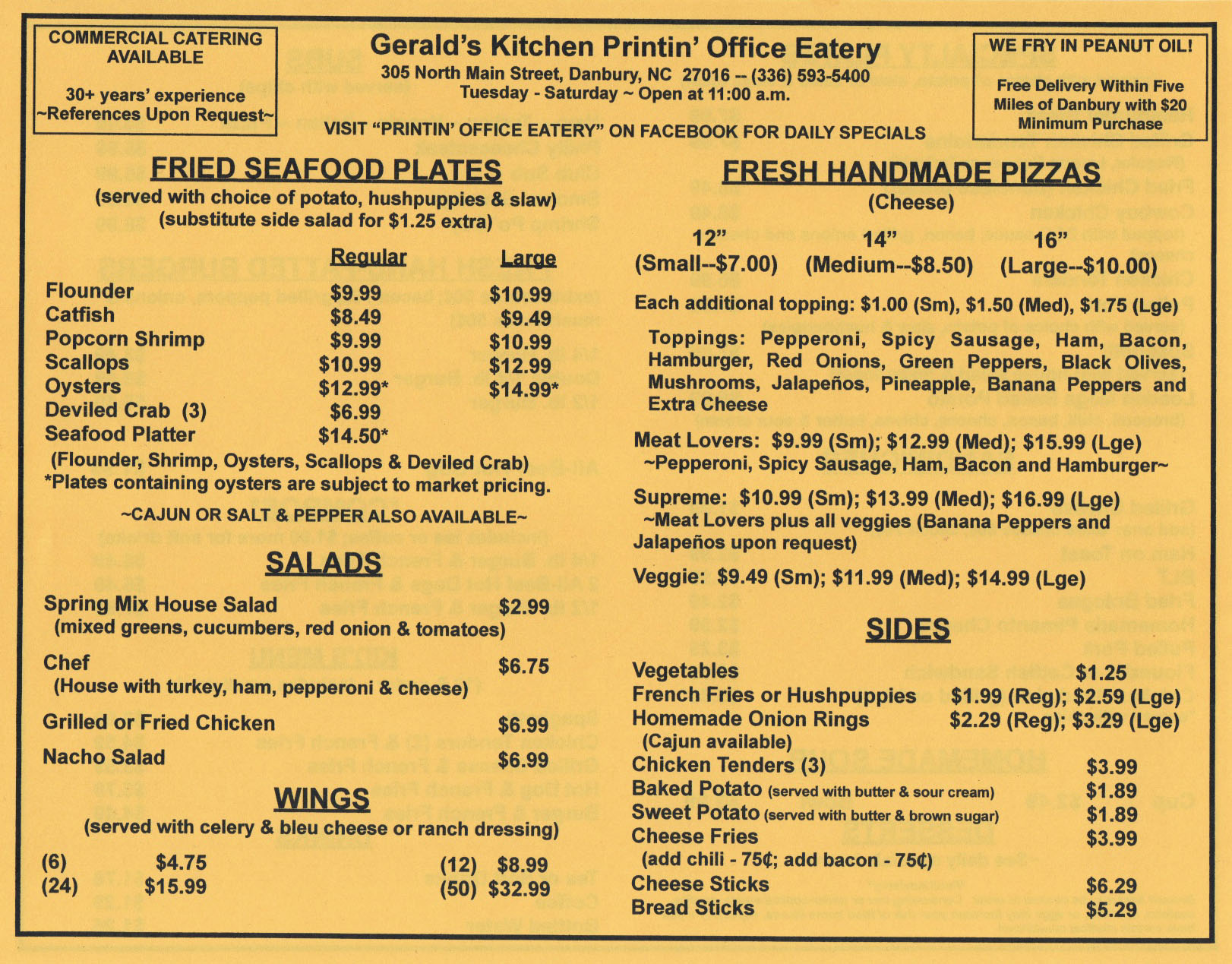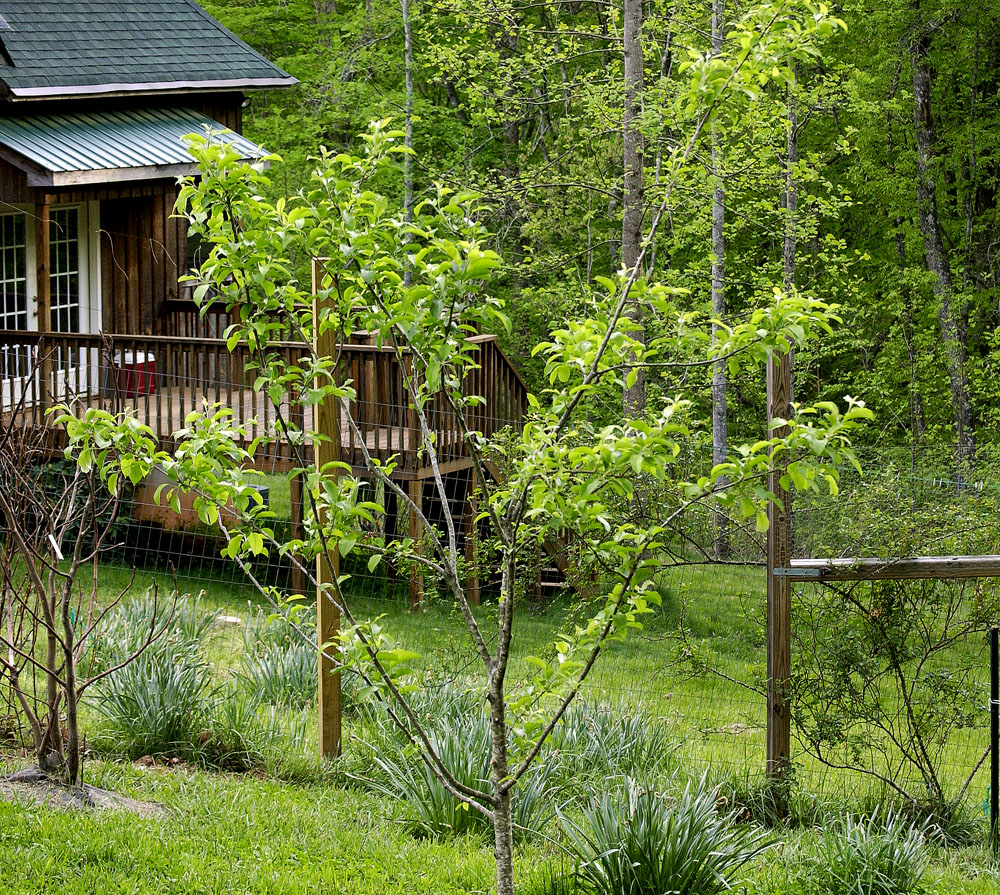
This apple tree looks spare and lanky because it was pruned heavily last winter. It won’t produce much fruit this year and instead will put all its 2014 effort into the growth of the tree. But, next year and in future years, the pruning will pay off.
Lucky is the man who has a mature, productive orchard. Starting an orchard is like trying to raise children in the Dark Ages — the investment is enormous, and the mortality and accompanying heartbreak run high. The oldest trees in the abbey’s orchard will be six years old this fall. The other trees vary in age, as trees that have been lost have been replaced. This process of death and replacement continues.
Among the lessons learned, a couple of things stand out. For one (as with dogs), know your breeder. Fruit trees that come from fruit-tree puppy mills may look nice when you see them at the big-box hardware store. But they may have come from nurseries far away, and they may be of stock and varieties that are not hardy and not suitable for your area.
The abbey’s strongest trees are all old Southern varieties of antique or heirloom apple trees from a nursery two counties to the east that specializes in such trees — Century Farm Orchards. Though I lost (and replaced) two of those twelve six-year-old trees, that mortality rate is good compared with the mortality rate of other fruit trees. We’ve almost given up on cherry trees. Insects defoliate them. We were on our second or third attempt at growing fig trees, and things were looking good, until the near-zero temperatures last winter killed the figs. So while the cherry trees, figs, and even the pears die of the whooping coughs, smallpoxes and scarlet fevers that afflict young fruit trees, the hardy old apple trees and peach trees carry on. Getting fruit trees to maturity is not a small challenge.
We were tempted to attempt olives. But we pretty quickly decided against it, because olives are not truly suited to this area, and the risk of mortality in any given year would be high. Even figs are a big risk. But we love figs so much that we soldier on.
If (at least in this area) you want maximum fruit and minimum grief in your young orchard, stick with apples and peaches, of old and proven varieties, from known nurseries with a track record and a nurseryman who will answer your emails (as David Vernon from Century Farm Orchards always does).
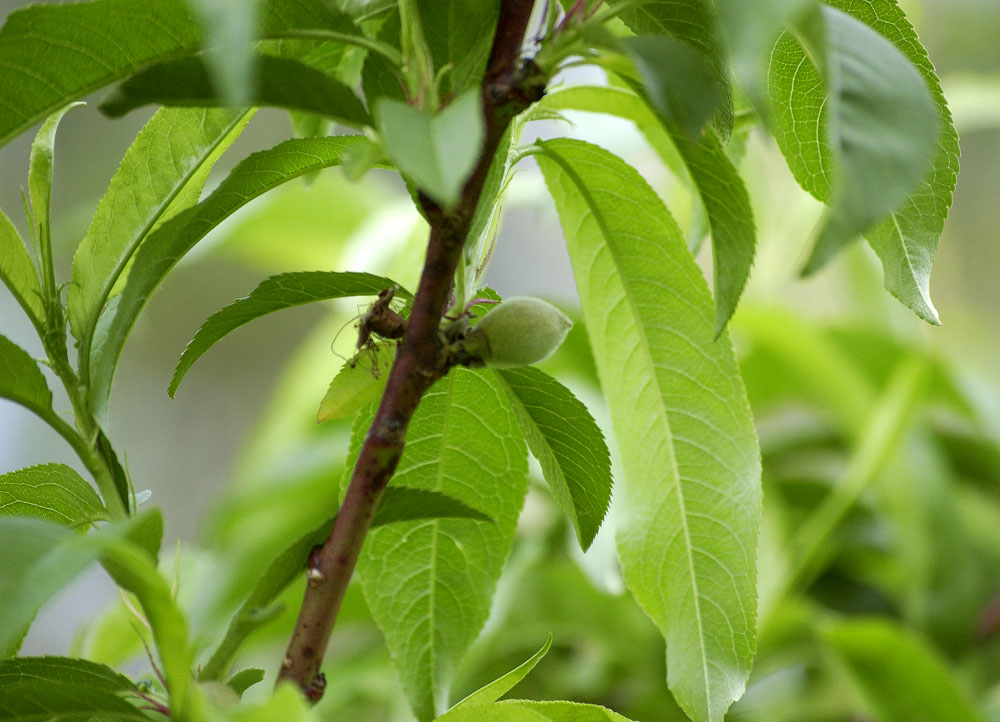
A baby peach

Baby apples
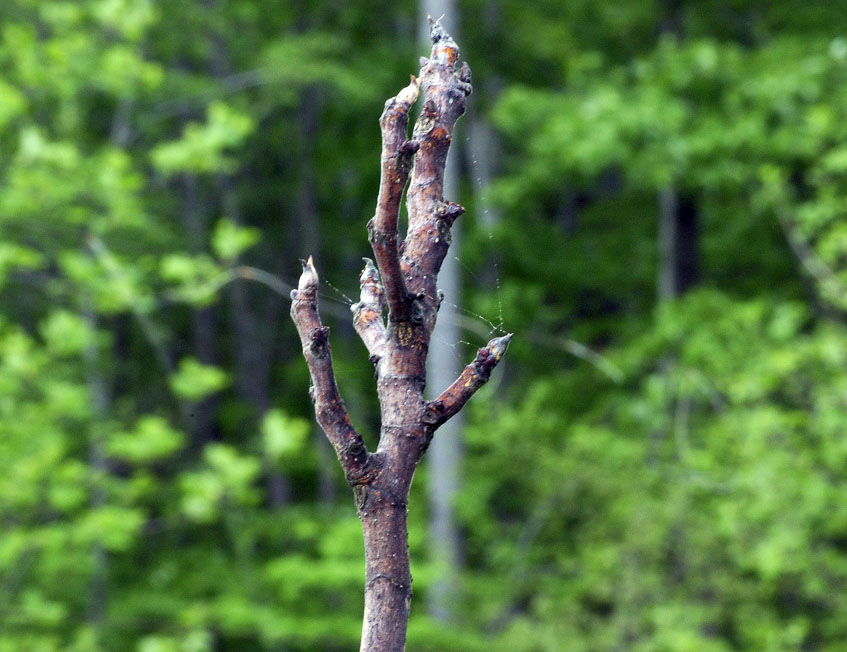
A fig stalk, killed by the cold winter, though its roots may still be alive
